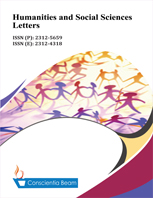Effects of Teaching Methods on Basic Science Achievement and Spatial Ability of Basic Nine Boys and Girls in Kogi State, Nigeria
DOI:
https://doi.org/10.18488/journal.73.2018.64.149.155Abstract
The study investigated the effects of process-oriented instructional strategies on the spatial abilities of basic science students in Kogi state. Spatial ability contributes immensely to the understanding of science. 702 basic nine students, made up of 316 boys and 386 girls were used for the study. While the experimental group was taught topics in basic science using process-oriented instructional strategies, the control group was taught with lecture method. Variables such as gender and teaching strategies informed the direction of the investigation. Four null hypotheses were formulated and tested at the 0.05 level. Three research instruments; Spatial Ability Test (SAT), reliability 0.81, Basic Science Achievement Test I (BSAT I), reliability 0.87, and Basic Science Achievement Test II (BSAT II) with a reliability of 0.85 were used. Data analysis utilized percentages, frequencies, means, and t-test for independent samples. The results showed that no significant differences in basic science achievement between boys and girls taught by lecture method and those of process-oriented instructional strategies were found. Significant differences were found between the spatial abilities of girls taught by lecture and those taught by process-oriented instructional strategies and between boys taught by lecture and those taught by process-oriented instructional strategies. It was recommended that boys and girls could be taught together; thus solving the problem of space and materials/resources often expensive and relatively scarce in many Nigerian schools. Teachers should emphasize the process-oriented instructional strategies in science teaching.

